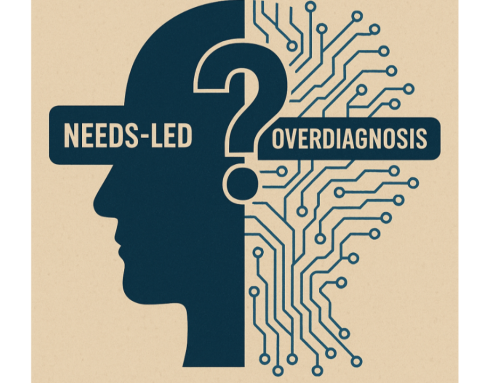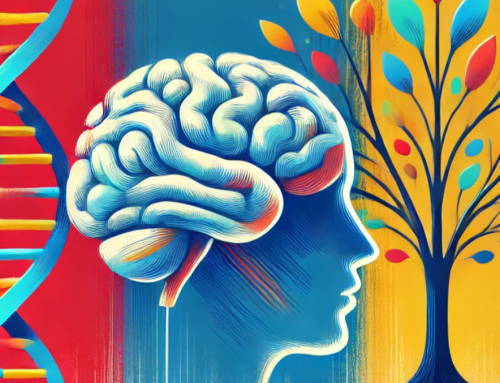While autism spectrum disorder (ASD) continues to gain awareness in the broader community, there are still many misconceptions around what it means to be an autistic person, and how they navigate the world around them.
Maybe you see autism as a linear spectrum, with people diagnosed as “mildly autistic” on one end of the spectrum, and those with “severe” autism on the other.
In actual fact, this is an overly simplified view of autism that doesn’t capture all the unique qualities and abilities that each autistic person has, and can develop, throughout their lifetime.
Thanks to autism advocates and creatives like Rebecca Burgess, a comic illustrator from the UK, the conversation around autism is changing for the better – and it all starts by understanding the autism spectrum.
Understanding the autism spectrum and common autism symptoms
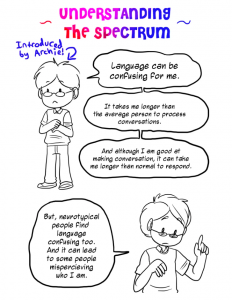
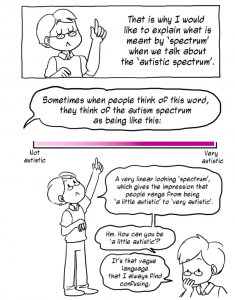
Some of the most commonly-recognised symptoms of autism are difficulty communicating and socialising with others. What people with autism appear to struggle with on the outside, is due to differences in how their brains process information on the inside.
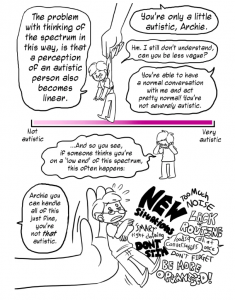
The problem with putting autistic people on a linear spectrum of autism severity is that people with different strengths and support needs may be lumped into generalised groups of perceived ability – regardless of whether or not they are actually capable of the same things.
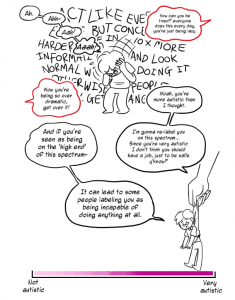
For example, some autistic people who feel comfortable in social situations may be thrown into other environments or given tasks at work or school that might be overwhelming for them.
Others who struggle to maintain eye contact or “read between the lines” may be passed over for job opportunities or treated differently, despite being more than capable of performing a job or understanding a lesson at school.
Just because an autistic person doesn’t respond to interactions in an obvious or expected manner, doesn’t mean they don’t understand what is happening, or that they don’t have feelings.
As a result, many autistic people are underestimated and given a label by others that doesn’t reflect who they really are, and may be unable to get the support they really need.
So, what is a more accurate explanation of the autism spectrum? Instead of a sliding scale, think of it as a colour wheel, with each colour representing different traits that an autistic person can have.
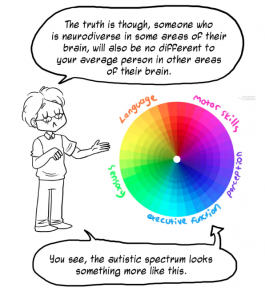

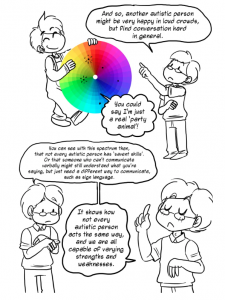
So, how can I support someone with autism?
If you have a friend, colleague, or loved one who has been diagnosed with autism, the best thing to do is ask!
Ask them how you can better support them, ask them how they are feeling on a particular day, and if they need help with any tasks. If they don’t like a lot of noise and crowds, try to accommodate them by planning outings outside of rush hour.
If they have a set routine, try to organise activities in a way where they don’t feel distracted, disrupted, or under too much pressure.
Instead of painting every autistic person with the same brush, you should get to know them for who they uniquely are.
Just like non-autistic people, people with autism have their own likes, dislikes, personalities, and ways of thinking, and every day is different for them too.
Acknowledgements
We’d like to express our gratitude to the talented Rebecca Burgess for allowing us to feature her work in this post. You can read the full comic and article by Rebecca here: Understanding The Spectrum – A Comic Strip Explanation or in pdf format here. See more from Rebecca on Instagram.
